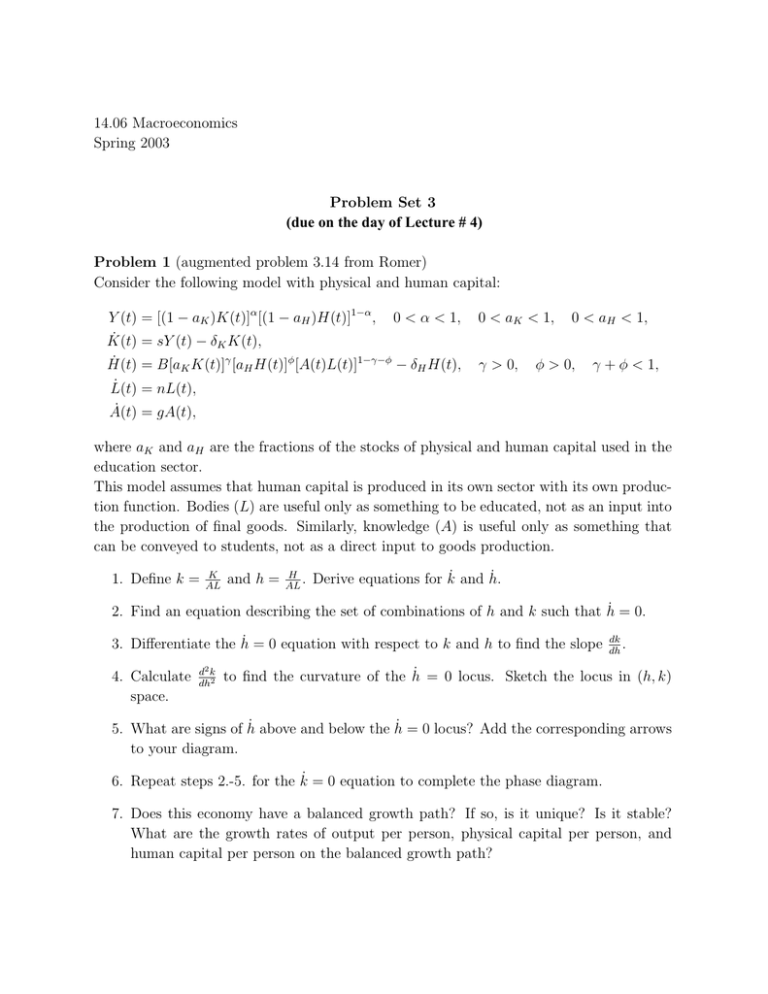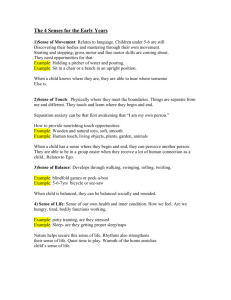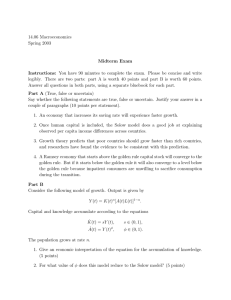Document 13569903
advertisement

14.06 Macroeconomics Spring 2003 Problem Set 3 (due on the day of Lecture # 4) Problem 1 (augmented problem 3.14 from Romer) Consider the following model with physical and human capital: Y (t) = [(1 − aK )K(t)]α [(1 − aH )H(t)]1−α , 0 < α < 1, 0 < aK < 1, 0 < aH < 1, K̇(t) = sY (t) − δK K(t), Ḣ(t) = B[aK K(t)]γ [aH H(t)]φ [A(t)L(t)]1−γ−φ − δH H(t), γ > 0, φ > 0, γ + φ < 1, L̇(t) = nL(t), Ȧ(t) = gA(t), where aK and aH are the fractions of the stocks of physical and human capital used in the education sector. This model assumes that human capital is produced in its own sector with its own produc­ tion function. Bodies (L) are useful only as something to be educated, not as an input into the production of final goods. Similarly, knowledge (A) is useful only as something that can be conveyed to students, not as a direct input to goods production. 1. Define k = K AL and h = H . AL Derive equations for k̇ and ḣ. 2. Find an equation describing the set of combinations of h and k such that ḣ = 0. 3. Differentiate the ḣ = 0 equation with respect to k and h to find the slope 4. Calculate space. d2 k dh2 dk . dh to find the curvature of the ḣ = 0 locus. Sketch the locus in (h, k) 5. What are signs of ḣ above and below the ḣ = 0 locus? Add the corresponding arrows to your diagram. 6. Repeat steps 2.-5. for the k̇ = 0 equation to complete the phase diagram. 7. Does this economy have a balanced growth path? If so, is it unique? Is it stable? What are the growth rates of output per person, physical capital per person, and human capital per person on the balanced growth path? 8. Suppose the economy is initially on a balanced growth path, and that there is a permanent increase in s. Sketch how the economy moves to the new balanced growth path in your phase diagram. How does this change affect the path of output per person over time? Repeat this analyis for a permanent increase in n. Problem 2 (problem 3.17 from the first edition of Romer’s textbook) Suppose the production function is Y (t) = K(t)α H(t)1−α where 0 < α < 1. Notice that it exhibits constant returns to physical and human capital together. Physical capital K and human capital H evolve according to K̇(t) = sK Y (t) and Ḣ(t) = sH Y (t). 1. Show that regardless of the initial levels of K and H (as long as both are positive), �K �∗ the ratio K converges to some balanced-growth-path level . H H � �∗ 2. Once K has converged to K , what are the growth rates of K, H and Y ? H H 3. How, if at all, does the growth rate of Y on the balanced growth path depend on sK and sH ? � �∗ 4. Suppose K starts off at a level that is smaller that K . Is the initial growth rate of H H Y greater than, less than, or equal to its growth rate on the balanced growth path? Problem 3 Consider the model of Mankiw, Romer and Weil (1992) presented in class. What values of sK and sH maximize consumption per unit of effective labor on the balanced growth path?




